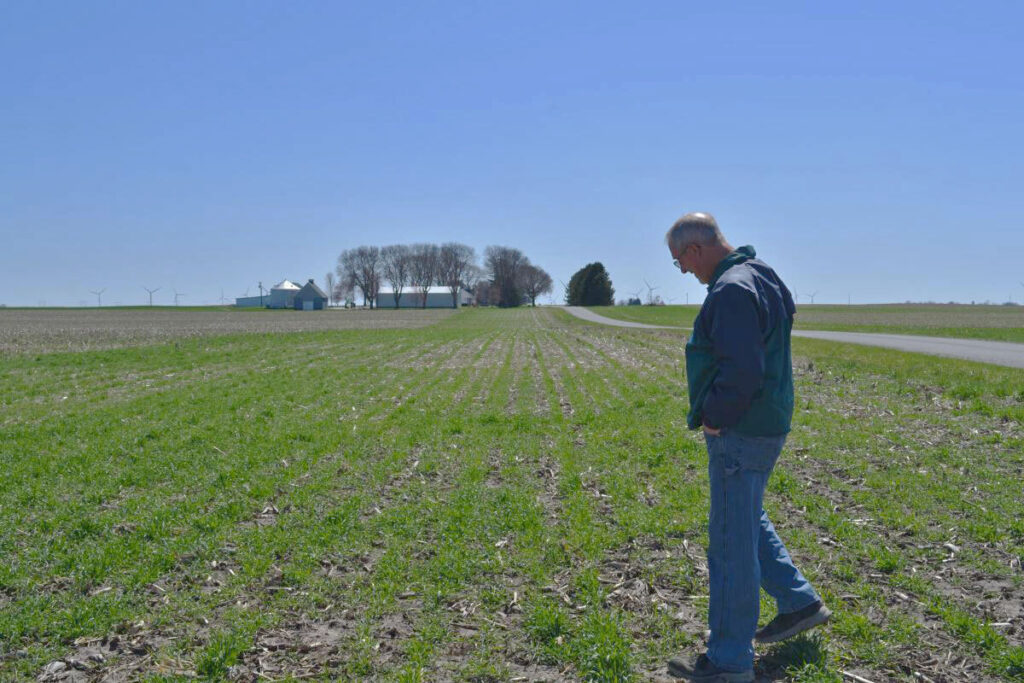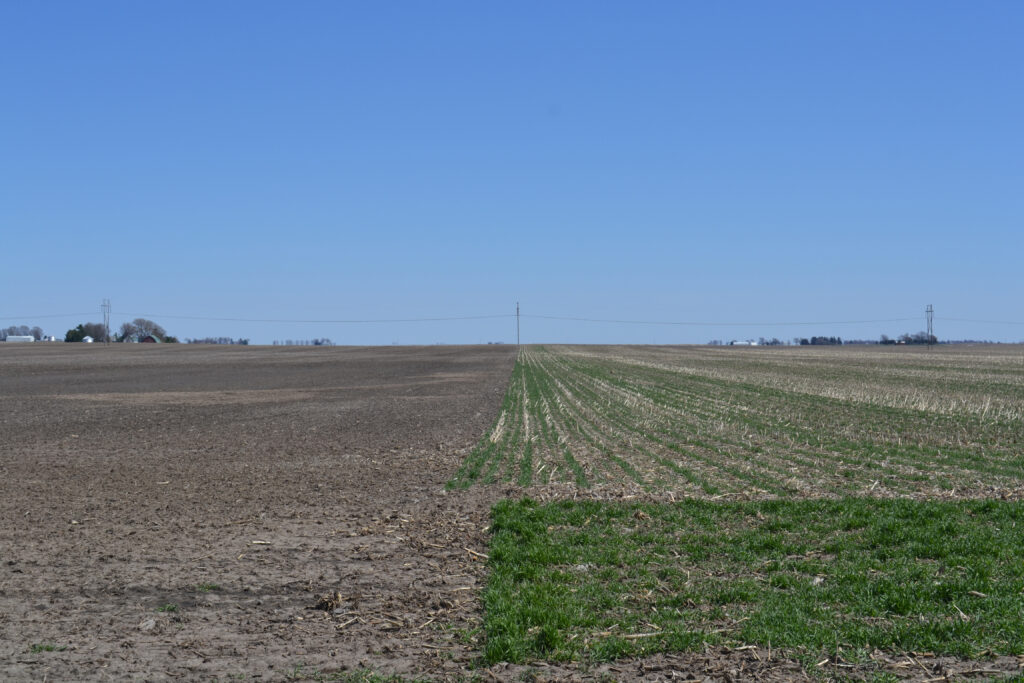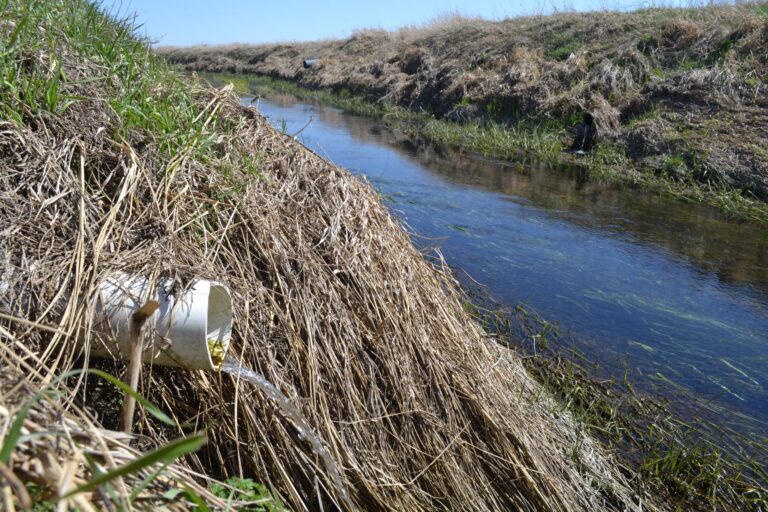BROADLANDS — When it rains on Joe Rothermel’s central Illinois farm, most of the water drains into the nearby East Branch Embarras River. There, it begins a journey south through the Wabash, Ohio and Mississippi Rivers. As it flows through more and more farmland, fertilizer runoff — which once nourished crops — compounds the water’s nutrient load, resulting in a dead zone off the coast of Texas and Louisiana.
Rothermel does what he can to reduce his nutrient runoff, including planting cover crops on 800 of his 1,100 corn and soybean acres and utilizing reduced-tillage methods.
“After farming for a couple of years and just looking around at what’s happening, I just decided there has to be a better way to farm than just continually pouring more and more inputs into the field,” Rothermel says. “Soil is a finite resource, and I just decided that we need to maintain it.”
But, despite his and other farmers’ efforts, agriculture is among the largest contributors to the Gulf of Mexico’s hypoxic zone, which is inhabitable for fish and other marine life. In hopes of reducing the size of the dead zone, many Mississippi River basin states, including Illinois, Iowa and Missouri, have adopted strategies to cut down on nitrogen and phosphorus runoff into local waterways.
The basic goal of Illinois’ Nutrient Loss Reduction Strategy (NLRS) is to cut nutrient loads almost in half. More immediately, the aim is to reduce nitrogen by 15% and phosphorus by 25% in the next four years.
So far, it’s not working. In fact, nutrient loads have increased since the state adopted the strategy in 2015.
The Illinois Environmental Protection Agency (EPA) estimates between 2015-2019, nitrogen and phosphorus loads increased respectively by 13 and 37% over baseline numbers.
And there are a number of reasons for that increase.

More rain equals more nutrients
It’s pretty simple: with increased rainfall comes more water running off farmland into waterways. Between 2015 and 2019, Illinois saw a 25% flow increase — largely driven by the intense flooding in the Midwest during the spring of 2019.
“That really helps drive the nonpoint source runoff and the nutrient levels, unfortunately,” says Trevor Sample, who coordinates the NLRS for Illinois EPA.
With a changing climate, the Midwest region can expect to see more precipitation over time and perhaps even more flood events like 2019.
It’s a phenomenon that Rothermel sees firsthand.
“You know how it rains nowadays. Instead of getting a half inch, we get three inches,” he says. “There’s fields that have low areas that we can just about count on replanting nowadays, even with tile [drainage], because it just seems to rain a lot in the spring.”
The increase in rainfall has led to more soil erosion on his farm, which — in addition to further polluting nearby waterways — has also affected the farm’s productivity, Rothermel says.
Illinois EPA’s Sample says there’s nothing that can be done about it.
“We can’t control the weather, but we can control what we do on the land,” he says.
No state money
There are 12 states with nutrient reduction strategies in place — though they all differ in their specific approaches and implementation.
Their funding models also differ.

“Some of the legislatures have passed legislation that sends a significant amount of money to reducing nutrient loss in their states,” says Sample. “We don’t have that in Illinois.”
To be clear, the state of Illinois does allocate money to conservation programs that result in nutrient loss reduction, including a popular program discounting crop insurance for farmers planting cover crops. But there’s currently no money allocated directly to reducing nutrient loss in the state.
By comparison, since 2013, Iowa has dedicated between $9.5 million to $10.6 million annually to nutrient reduction through its Water Quality Initiative, which was established in direct response to the state’s NLRS. Iowa Gov. Kim Reynolds also signed a law that dedicates more than $270 million to the state’s water quality efforts through 2029.
“Whenever you look at Iowa… it’s just incredible to see the work that we’ve been able to do in Illinois without assistance from the state level as much,” says Jennifer Jones, Watershed Outreach Associate with the University of Illinois Extension.
Even with the funding, a 2019 report found that it could take Iowa hundreds or thousands of years to meet its nutrient loss reduction goals.
Education, education, education
Instead of directing money to the NLRS, Illinois has primarily relied on educational and outreach programs to boost farmer participation.
Jennifer Jones plays a crucial role in that effort. She helps produce the Illinois Nutrient Loss Reduction Podcast, a monthly podcast designed to be a nutrient reduction 101 course. They feature experts on topics ranging from how to design constructed wetlands to managing cover crops. Each episode features a farmer who has implemented a specific conservation strategy and can serve as a resource for others who may want to learn more.
“We found that it’s really important to just share their challenges and how they worked around those and what kind of resources they use, what people they called upon to help them,” Jones says.
Despite these and other outreach efforts, a 2019 survey from Illinois State University found fewer than half of Illinois farmers had even heard of the NLRS.
“The success of this initiative and the success of protecting our environment while sustaining our agricultural operations really comes down to education,” says Michael Woods, manager of the Illinois Department of Agriculture’s Natural Resources Division.

Woods says continuing to educate farmers on soil health practices and doing outreach for existing conservation programs is key to reducing nutrient loss in the state. He also has high hopes for the next generation of farmers.
“As we continue to see younger generations take over [and] as we continue to see greater education and awareness… we’re going to see a shift in these practices,” he says.
As it stands, the NLRS is a voluntary strategy. According to the Illinois Department of Agriculture, there have been no discussions about making it mandatory for farmers to implement conservation practices on their land.
Illinois farmer Joe Rothermel thinks it’ll take more than just education to get farmers on board.
“I think it’s going to take a combination of things,” he says. “It’s going to take a lot of education, it’s going to take some incentives, and it’s going to take some new technology to help farmers along the way.”
The next Illinois biennial report is due out later this year. It’ll provide a glimpse into whether the efforts of the past two years have paid off and how long of a road lies ahead.
Follow Dana on Twitter @DanaHCronin

